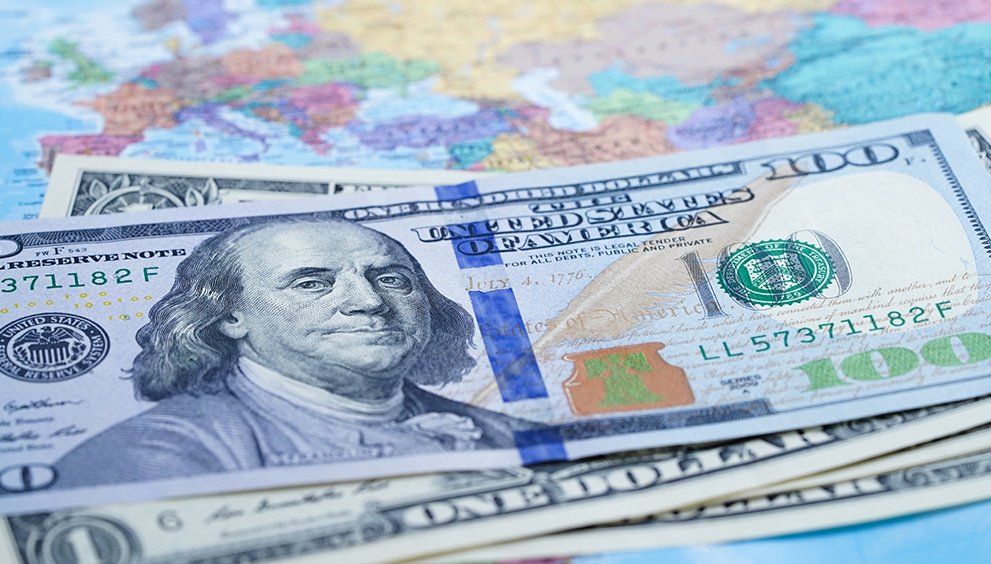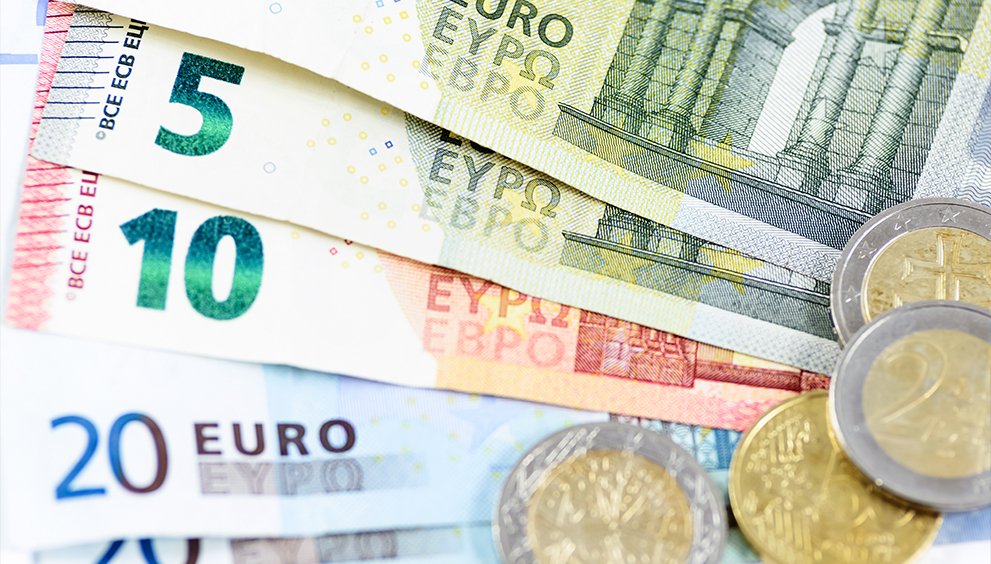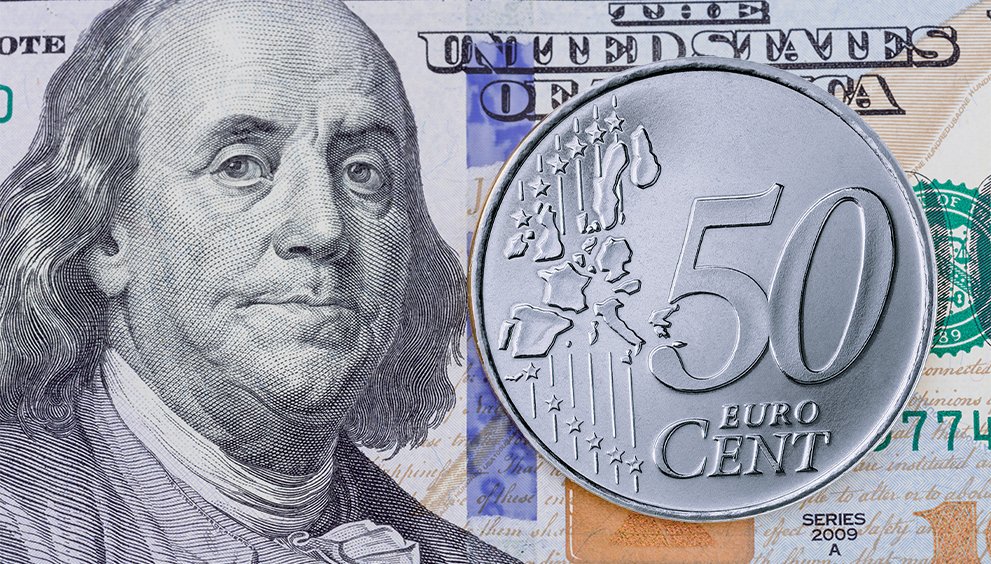EUR/USD Steadies as Dollar Strength Persists

The EUR/USD recovered modestly to trade around 1.1575 in Friday’s Asian session, up less than 0.10% on the day. The pair is believed to have stabilised, with some dip-buying interest emerging after two days of losses that had taken the pair near the monthly lowest at around the 1.1550-1.1540 support. The move was not however strongly momentum and this is evidence of the persistent cautionary attitude among traders in the face of a still-dominant US dollar and a muted eurozone outlook.
Market reports point out that the US Dollar Index (DXY) is being consolidated at the highest level since the beginning of August with the support of the revived demand due to the hawkish tone adopted by the Federal Reserve (Fed) at the beginning of this week. Fed Chair Jerome Powell, who earlier suggested a December rate cut might be necessary, contributed to strengthening the greenback by commenting in opposition to it. Meanwhile, the risk sentiment is still weak because geopolitical tensions and global growth fears continue to keep the safe-haven demand high and provide further pressure on the dollar and put pressure on the euro recovery efforts.
Market reports point out that the European central bank (ECB) maintained a conservative position by not reducing the rates at a third consecutive meeting despite stable inflation but volatile growth expectations. The mixed opinion of the policymakers on when the rate reduction should be done has also hampered the single currency enthusiasm. As traders are reluctant to invest in vigorous long positions, the 1.1550 will be one of the critical supports to monitor to be followed-through if broken down.
Analysts indicate that traders are awaiting the future economic data in the US such as personal consumption expenditures (PCE) and consumer sentiment data to be directed further. Any weakening in US data would curtail prognostication of continued Fed hawkishness and provide the euro with short-term relief. However, the overall pattern is skewed towards the dollar and so, EUR/USD will be susceptible to further downward pressure in the near future.

USD/JPY Slips as Yen Strengthens Post-data
The USD/JPY pair retreated modestly and traded around 153.80 in Friday’s Asian session, after touching an eight-month high of 154.45 in the previous session. The pullback is believed to have come at the time the Japanese yen strengthened due to the boost of domestic data spearheaded by increased Tokyo CPI in October and enhanced retail activity. The CPI rose 2.8%, compared to the previous year, which was higher than the market expectations and was well above the Bank of Japan (BoJ) target of 2% and this raised speculations that the policymakers would go a step higher to tighten monetary policies in the coming months.
Market reports point out that the macro indicators of Japan contributed to the strength of the yen, as retail trade recovered by 0.5% YoY and industrial production increased by 2.2% MoM with it being the first time in six months. Nevertheless, profit gains in the JPY are limited because the BoJ kept the key rate at 0.5%, and it is expected, and Governor Kazuo Ueda sounded a rather reserved tone, stating that there is moderate economic recovery, but there is a threat of global trade uncertainties. Ongoing disjuncture of policy between the BoJ and the US Fed remain sources of the overall bullish USD/JPY.
Market commentators point out that the dollar was given further strength in the US after President Trump declared the tariffs on China to be reduced to 47% as opposed to 57% and resolved the issue of the rare earth thus removing the strain between the two countries hence the market risk appetite improved. However, investors are on alert before the next US economic releases, such as core PCE inflation and ISM manufacturing data, which would impact future Fed policy actions.
Analysts indicate that the 153.50154.50 range is important in the near future and a continuous strength above 154.00 can reopen the road to 155.00. Any weaker US statistics or indications of stronger Japanese inflation would however stimulate additional consolidation which would bring medium-term threats to the dominance of the dollar.
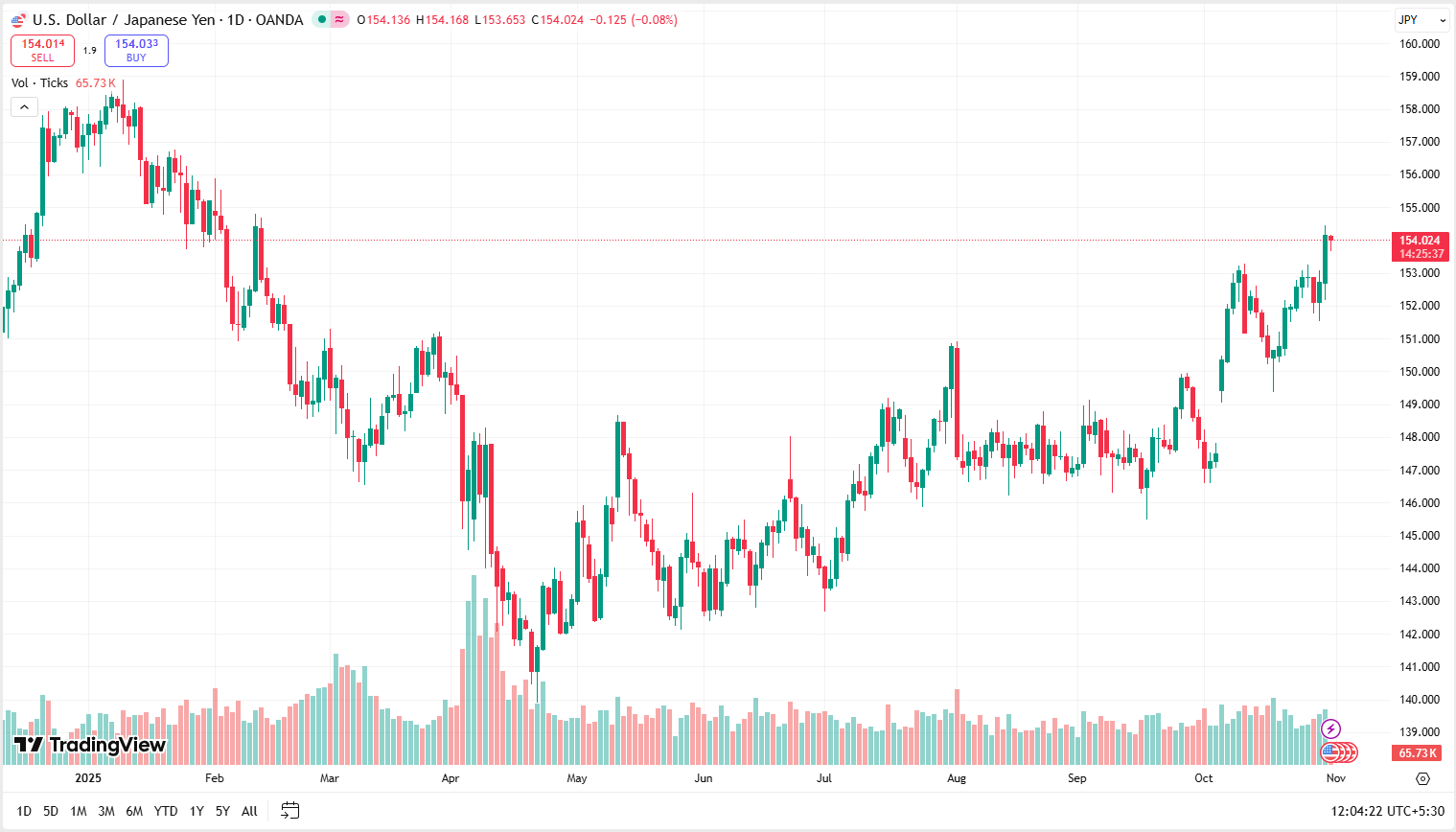
GBP/USD Steadies as Policy Uncertainty Limits Gains
The GBP/USD pair edged higher and traded around the 1.3160 mark in Friday’s Asian session, recovering modestly after three consecutive days of losses. It is believed that the pair managed to have some support when the US currency depreciated against the increasing market confidence that the Fed would make another rate cut in December. The GBP to USD exchange rate reflects this renewed optimism as investors reassess dollar weakness. The CME FedWatch Tool has indicated that the likelihood of such action increased to 71% as compared to 66% on the previous day as bets continue accumulating that the Fed will remain on a dovish tilt due to ongoing growth fears.
Market commentators note that the pound gains are still limited after Fed Chair Jerome Powell warned that the central bank is feeling uncertain about balancing inflation control and employment because the ongoing US government shutdown is disrupting major data releases. Powell observed that further reduction in the rates in this year is not assured, which indicates that the Fed might want to take a conservative, data-driven approach until the official report is available again. The most recent 25-basis-point cut to a 3.75%-4.0% range, voting 10-2 with a tie, also underlined internal divisions in the Committee, contributing to the short-term volatility in the greenback.
Market reports indicate that sterling gains in the UK are limited by increasing expectations that the Bank of England (BoE) might soon turn to rate cuts as inflation levels drop. Recent BRC figures indicated continued weakness in food prices, and that the issue of tightening of fiscal policy before November budget pressures sentiment. The outlook is further tainted by reports that the office of the budget responsibility will downgrade productivity forecasts, which will leave the government with a possible fiscal shortfall of £20 billion.
Analysts indicate that new direction will be followed by traders in the coming US ISM manufacturing data and the next week nonfarm payrolls report. Poor numbers may add to anticipations of additional Fed easing, which will supply short-term boosting to GBP/USD. Nonetheless, future growth apprehensions and imminent UK fiscal dangers continue to constrain long-term growth potentials.
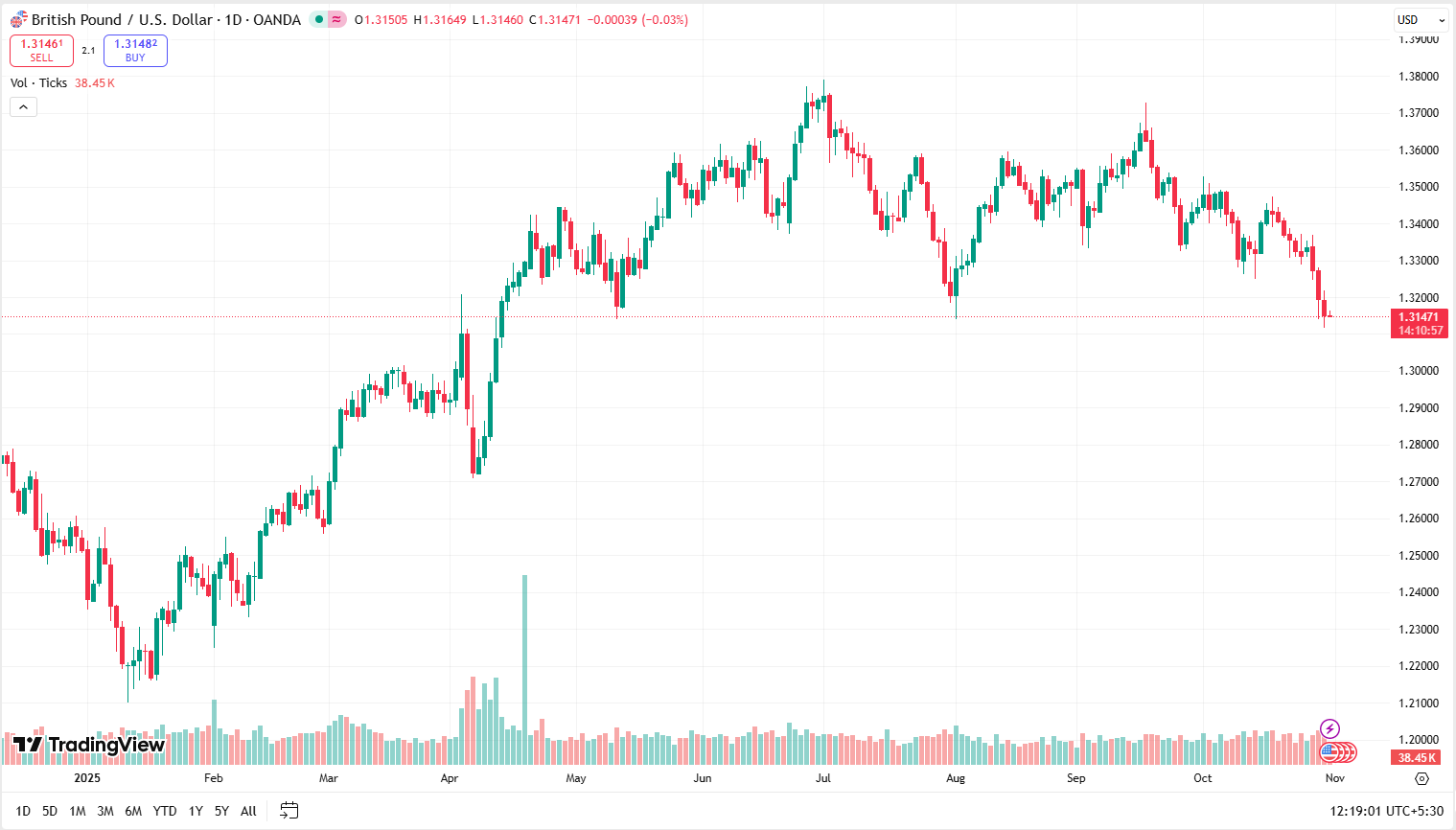
USD/CAD Steadies as Policy Divergence Unfolds
The USD/CAD pair held steady and traded around 1.4000 in Friday’s Asian session, consolidating gains from the previous day after the US dollar strengthened on Fed Chair Jerome Powell’s cautious remarks. The pair’s upward momentum followed the Fed’s 25-basis-point rate cut, which lowered the benchmark rate to 3.75%–4.00%. But the remarks by Powell indicated a feeling of uncertainty as to the policy course in the future, dimming the prospects of another cut in December, and giving the greenback a free pass in the near future.
Market commentators point out that even though the rebound is modest, the upside in USD/CAD could be limited because the overall market mood is still ambivalent with the evidence of policy divergence between the Bank of Canada (BoC) and the Fed. The fact that the BoC reduced rates by 25 basis points to 2.25 also indicated that the easing process is perhaps coming to an end. The policy position of the central bank was termed as approximately correct, implying a possible stalemate in the future. This relatively stable perception of policy in Canada can be a supporting factor behind the scenes should US economic data further weaken.
Analysts point out that traders will be watching imminent US releases, namely non-farm payrolls, ISM manufacturing data and the inflation indicators, to get further guidance. The poor labour market performance results of the recent past and low consumer confidence values have only increased worries that the US economic momentum is waning, and the Fed may not have much more policy to ease without stimulating fresh inflation threats.
Although USD/CAD is held together in the short-run by the safe-haven demand and US cautionary policies, the medium-term outlook is more balanced. A stabilising BoC position, and weaker US data, may put pressure on the couple keeping the resistance at and below the 1.4000 level and support at about 1.3900.
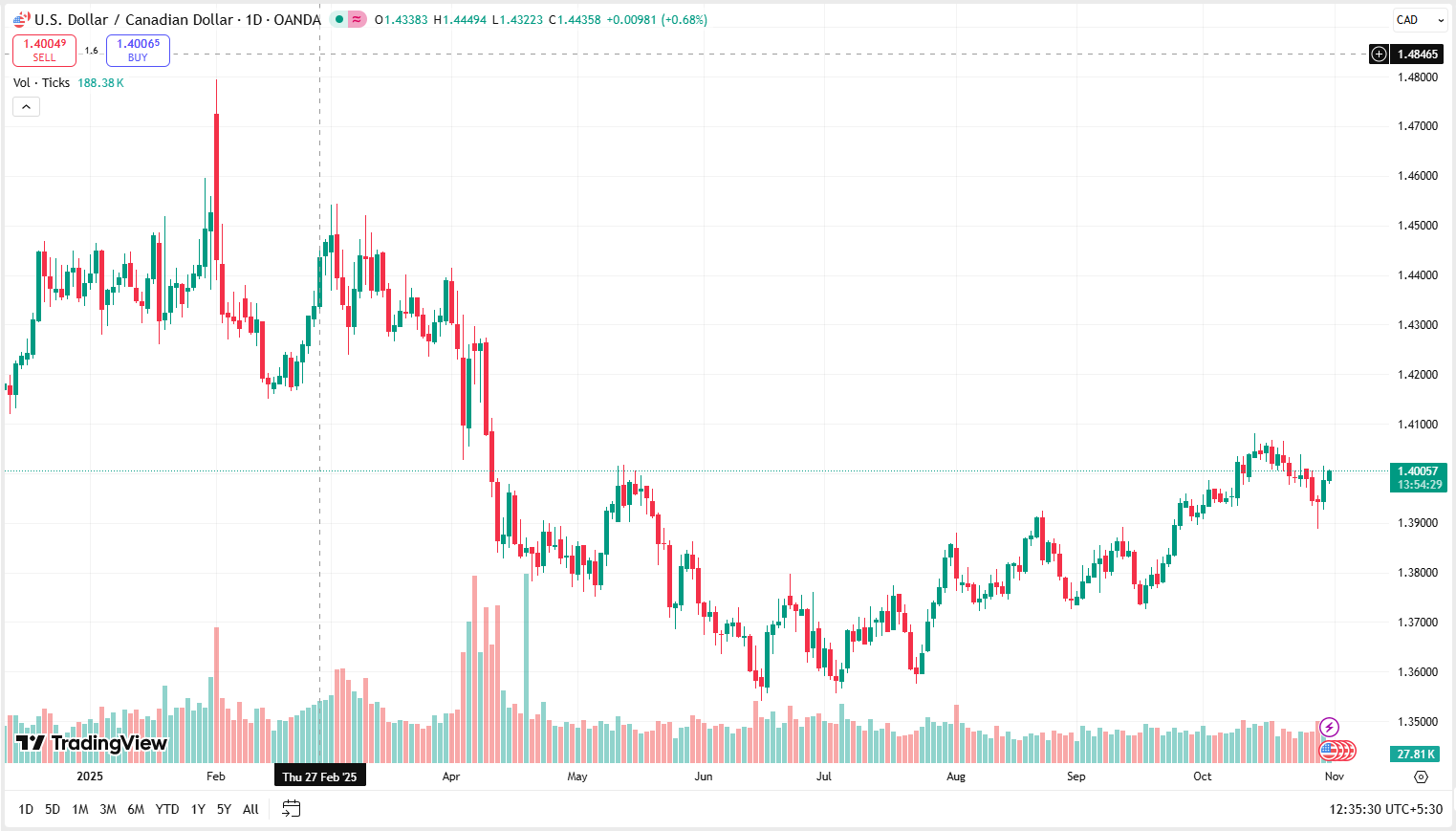


 English
English 










































































